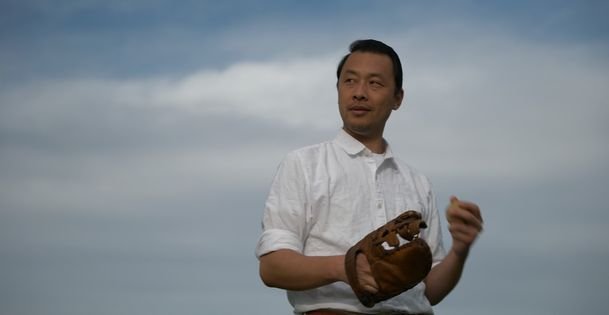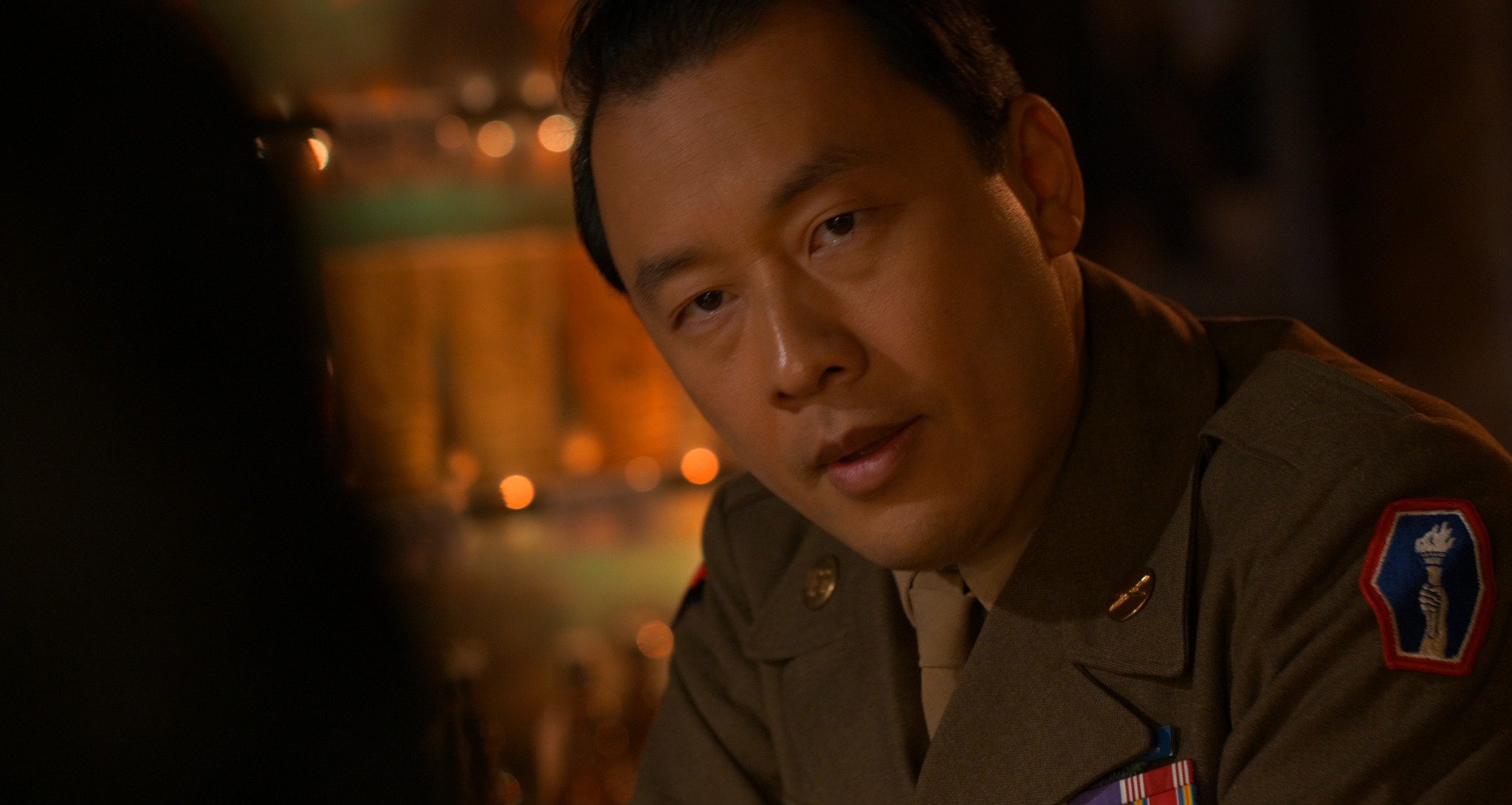Sansei Director of KINTSUKUROI Humbled by the Response
Meet filmmaker Kerwin Berk (pointing to the camera) at the screening of KINTSUKUROI on Saturday, October 12, 1 PM, at the Buddhist Church of Sacramento. Tickets are available here.
(See the photo gallery, below. Courtesy: Ikeibi Films).
For years Kerwin Berk has collected bits and pieces and stories about Japanese Americans, including his own family’s history, and tucked them away. A longtime journalist, Berk last worked at the San Francisco Chronicle and thought he’d write a book one day. Instead, he put his talents to the test as a screenwriter and film director.
Berk says he started rather modestly, writing and producing a 30-minute short of his film, KINTSUKUROI. But with the pandemic and his retirement, he had a lot of free time on his hands. So he started writing a longer story that didn’t gloss over the indignities hurled at Japanese Americans, the pain they internalized for years, and their fight for acceptance.
Post-pandemic, Berk directed a full-length version of KINTSUKUROI.
“I thought my story would affect people, maybe remind them of their grandfather or father,” Berk said. “I was a little stunned at the reaction. I felt humbled, is a better word. It seems to be resonating with audiences, they know someone who went through the experience.”
KINTSUKUROI has been screened in the Bay Area and Northern California. Many in the audience were seen weeping by the end of the film, it’s that moving.
As for the title, Berk and his cast did some brainstorming and came up with it. What does it mean?
You might have seen ceramics in the kintsukuroi style. Kintsukuroi refers to the Japanese art of repairing cracked ceramics, like a chipped bowl, using gold lacquer. By embracing the flaws, you not only rescue something that’s broken but create something beautiful in the process.
For Berk, kintsukuroi symbolizes resilience – how Japanese immigrants, the Issei, and their American-born children, the Nisei, survived incarceration by the US government during World War II. After Japan bombed Pearl Harbor, they were punished because of their race.
“The community was broken, tragically shattered,” said Berk. “But it wasn’t destroyed. They were able to survive and come back, they made it beautiful and strong.”
Berk, 57, is sansei, a third-generation Japanese American, born in San Francisco’s Japantown. He’s the son of an American soldier and a Kibei woman, who was born in America and sent to Japan as a child before returning to the US. She and her family were among those incarcerated at the camp in Topaz, Utah.
“I’ve been cobbling stories together for over 20 years,” said Berk. People who were kids at the time of the camps like his mother recalled a fun, seemingly normal childhood. While trying to shield the children, the adults nonetheless felt the weight of being ostracized, losing their homes and livelihoods, and being under constant surveillance, surrounded by barbed wire and armed guards in watch towers.
“The older Nisei, especially, suffered but they were able to hide it,” he said. Sometimes to the detriment of their mental health.
Berk also gathered stories of resistance to the US government and wartime incarceration and the discrimination Nisei soldiers experienced after returning home from the battlefield. He crafted a narrative that spanned generations and produced his film on a shoestring budget.
He received a small grant from the San Francisco Arts Commission, but it wasn’t enough to pay salaries. His cast and crew, who were predominantly Japanese American, volunteered their time and talents. (He hopes to pay them one day.)
He explained the film’s crucial train scenes to the folks at the Western Railway Museum in Solano County. They supported his project and only asked for a nominal rental fee of $200.
He also tracked down some World War II memorabilia to a man in Livermore. The collector usually rented his tanks to big-budget films like Oppenheimer, but offered them to KINTSUKUROI for free because “he revered the 442nd.”
Around 18, 000 Nisei soldiers made up the segregated 442nd Regimental Combat Team. Their heroism and sacrifice on the battlefields in Italy, France, and Germany made them one of the most decorated units in US military history.
While KINTSUKUROI looks at Japanese American history, the film ultimately chronicles American history. Out of tragedy emerges resilience that’s been passed on to generations. An act of beauty in the eye of the beholder. — By Sharon Ito
TICKET INFORMATION
KINTSUKUROI will be screened at the Buddhist Church of Sacramento on Saturday, October 12, at 1 PM, with a conversation to follow with screenwriter and film director Kerwin Berk and his cast and crew. Doors open at noon (Tickets are available here.)







